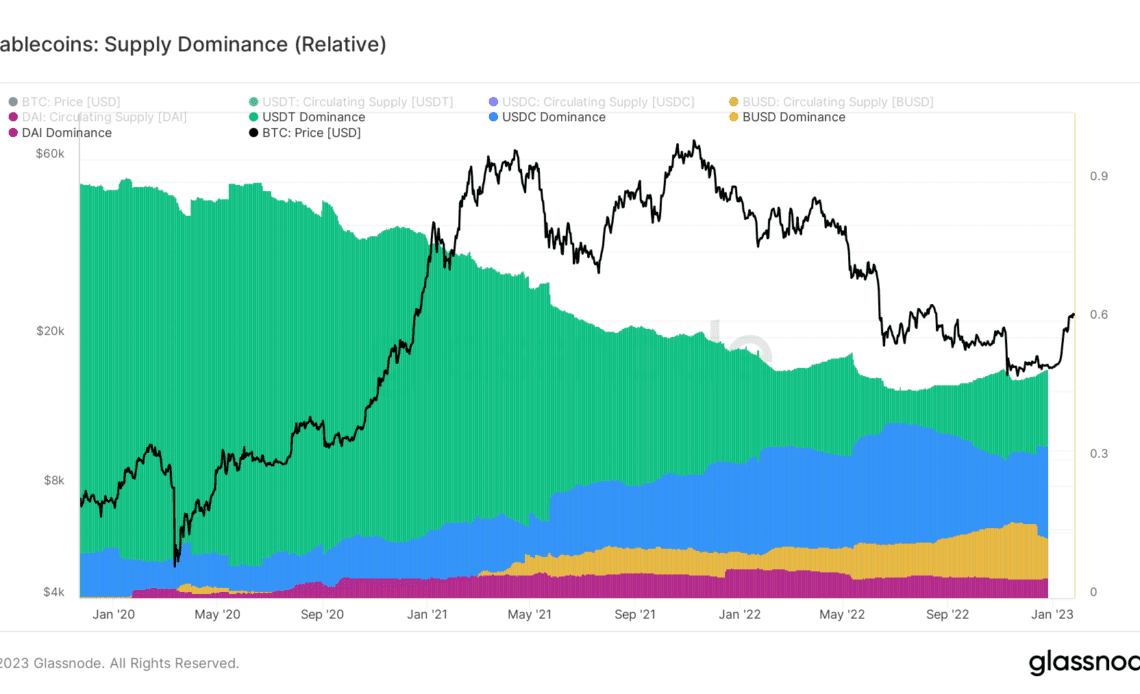Stablecoins in the cryptocurrency market help provide USD pegged tokens within the volatile industry. In bull markets, the market capitalization of stablecoins tends to decrease as investors flock to more volatile assets and in bear markets, investors seek shelter in low volatility stablecoins thus increasing their market caps.
On Jan. 26, the total market capitalization for stablecoins like Tether (USDT), USD Coin (USDC), Binance USD (BUSD) and Dai (DAI) is over $131 billion.
Stablecoins are so crucial to the future of crypto, that Moody’s, a well-respected analytics agency, is planning to develop a scoring system. The scoring system may help reduce the speculation and fear that some investors have with stablecoins.
Such fear amid a lack of stablecoin transparency has led one of the top stablecoins, BUSD, to see a major usage decline in recent weeks.
Let’s examine the factors affecting the BUSD stablecoin.
BUSD’s market cap takes a major hit
While BUSD market cap witnessed a large bump on Sept. 30, 2022, those gains came from Binance’s decision to forcefully swap the exchange’s USDC holders to their own stablecoin. Those gains have now evaporated. At the time, the automatic conversions cost USDC $3 billion in market cap.
BUSD market cap has continued to fall due to problems with the dollar-pegged tokens’ management that first came to light in January 2023. While Binance pushed back on the reporting that the stablecoin was not fully backed, investor fears led to a major exodus.
According to blockchain analytics provider Nansen, the circulating supply of BUSD decreased to $15.4 billion on Jan. 25. The drop represents a decrease of $1 billion in the previous week and $2 billion compared with December 2022.

The most recent decline sped up BUSD’s market cap decrease from $22 billion, when worried investors rushed to withdraw money from Binance after it misrepresented the amount of digital assets in its collateral reserves by combining corporate holdings on reports.
BUSD inflows struggle
Since the price of Bitcoin (BTC) has been on the rise, stablecoins typically see a decrease in inflow as investors sell for other assets. A way to measure demand for stablecoins is to look at exchange inflows.
According to analytics provide CryptoQuant:
“Higher value indicates investors who deposited a lot at once are increasing recently. For stablecoin, value rise indicates buying…
Click Here to Read the Full Original Article at Cointelegraph.com News…
























